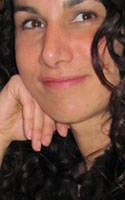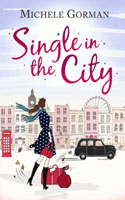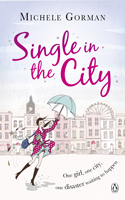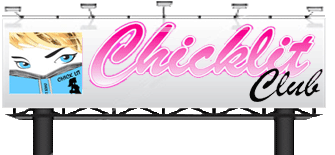INTERVIEW
October 2011

MICHELE GORMAN
Michele Gorman is the author of Single in the City, about an American moving to London. She is self-publishing it as an e-book in the US this month. She has a background in accounting and finance. You can find out more at her website michelegorman.co.uk.
Return to interview list
-

1. Why did you decide to self-publish Single in the City in the US?
When Penguin published Single in the City last year in the UK and its Commonwealth countries, my agent and I held back the US rights because I wanted a US publisher for the book. We thought it’d be a great fit. After all, the main character, Hannah, is American and there’s a strong theme about seeing London through her rather baffled eyes. But the US publishers we approached said that chick lit readers around the country wouldn’t get the humour in a book set outside their borders. I think they’re selling chick lit fans short by claiming they won’t understand the book and that’s why I’m doing it myself.
-
2. Did you change anything in the book for the American audience?
I sure did. I’m very lucky to have had a year of reviews from so many readers, which allowed me to see what they liked and didn’t like about the book. For example several readers would have liked to see less drinking … since that wasn’t an important feature of the story I toned it down (though we do like a tipple over here!). Hannah is also a bit more of a rounded character now, and I’ve deepened the scene settings to give a stronger sense of place – it’s a bit more descriptive. The other change I made has to do with my evolution as a writer. I like an episodic style but that can sometimes go a bit fast. The book I wrote after Single in the City was less episodic, so I applied the adapted style to the rewrite too. I also took out the footnotes that explained American/British differences (they were aimed at British readers to explain some of our more peculiar habits). Finally, I ‘translated’ it into American. This may sound easy but having written in English now for nearly 10 years, it was a slow process. Spelling was fairly straightforward thanks to spell check but the different words for things sometimes tripped me up. Luckily kind American friends helped me when I got stuck! English and American are definitely different dialects, something I only realised (the hard way!) when I moved to London.
-
3. Tell us about the change to the cover. (The US cover is above, the original UK one is shown right)
The cover design was a big decision and everything pointed to a photographic cover as the sensible option. Most US chick lit has these covers, and there’s been much debate (by which I mean judgment) about illustrated pastel covers. So I thought quite a bit about what to do. Then I thought, you know what? I don’t care what the critics say. They don’t speak for the readers of the genre, and I don’t write for those critics. I’m proud to write chick lit that stays true to the genre’s light-hearted, humorous roots. A cover that reflects that won’t appeal to everyone, but I’d much rather have a woman sneer as she passes it by than see her buy it because she doesn’t think it’s chick lit. A wise reader once pointed out that if you market cheese as chocolate, all you do is miss the cheese-lovers and disappoint the chocoholics.
-
4. How did your own experiences in England influence the story?
They provided endless examples of the trouble you can get into when you wrongly think you understand a situation! We all have these experiences though, when we try fitting in with our boyfriend’s family, or starting college or a new job, or moving to a new city or country. That fish-out-of-water uncertainty is something everyone faces. It might not be funny at the time but with hindsight, we can usually laugh.
-
5. In what way do you think Americans and Brits differ most?
The obvious areas are around language but I think the starkest differences actually have to do with the way we think about things and approach social interaction. British subtlety and American forthrightness got me into all sorts of situations. I’ll give you an example. During my first week of work in London I was finishing up some work in the evening. It was maybe half an hour past the end of the day. My boss came over, sat down at a nearby desk and asked ‘How’s it going?’ I said fine and carried on. A few minutes later he said, ‘Any plans tonight?’ I said no. ‘You don’t need to stay late,’ he said. ‘You can finish up tomorrow.’ That’s okay I said, it’s just a little more to do. Then I noticed him jiggling his leg with a funny look on his face. ‘Do you want me to go home?’ At that point he told me he was waiting for me to leave so that he could lock up. I wondered why he didn’t just ask me to go home. After living here awhile I realised he was asking me to go home. Another big difference is the different approach we take to work. Brits will generally down tools at the first sign of sunshine to go to the pub and stand outside. I’ve learned to embrace this work/life balance!
-
6. What do you miss most about living in the US?
Definitely my family and friends. I’ve lived now in London long enough to have adapted to most other things. Now when I visit the US I’m more likely to miss things about London.
-
7. Are you planning a sequel?
Yes and I’m very excited about it because I’m planning to work with readers to write it! I’d love to chat with people while I’m writing, to pick their brains about plots and characters. I spend months, years, with my characters, and I want to share that evolving world with book lovers. So, in writing the follow-up to Single in the City, I’m making it interactive. I’ll start posting the book as I write it. I’ll ask for readers’ opinions, and these will feed into the story. That way the readers will get to guide Hannah’s next adventure. That’s why I’d love everyone to send me a friend request on Facebook (www.facebook.com/michelegorman3) and follow me on Twitter (@expatdiaries). That’s where I’ll post the website link for readers.
-
8. For others considering a similar route, what is involved in the process of self-publishing that you didn’t have to worry about before?
Well you have to create the ebook but that’s pretty straightforward (except for Apple – I failed spectacularly at that. Now I know why Apple’s instructions include many notes along the way suggesting that you use one of their approved distributors instead of trying to do it yourself). You have to get an ISBN number and create the cover. If it’s non-fiction or a book that could cause any legal trouble, or needs permission for quotes, etc. you’d need to deal with lawyers. Those are all things that a publisher will do for you. A publisher will also have an in-house sales team to get the book into the distributors. If it’s a paperback then this could be a big part of your sales. And there’ll be a PR department tasked with getting the word out. I was very lucky because my PR, Helen Holman, was a superstar who contacted many of the lovely bloggers. But even so the writer is the one who does the interviews. And marketing is critical for a self-published book because otherwise no one will know it’s out there for sale.
-
9. Why did you decide to turn to writing?
Quite simply, I wanted to find a way to make a living for what’s inside my head without having to go into an office. I’m not there yet (like most writers I have a day job) but I remain hopeful! I figured that because I love to read, it’d be easy to write. I was wrong. It took many years for my ability to catch up with my enthusiasm.
-
10. What does chick lit mean to you?
To me the essential elements of chick lit are humour, a sharp female protagonist, a love story and a happy ending, though I realise that this is the traditional view of the genre. I do think that much of what is marketed as chick lit today doesn’t fit that description. That bothers me because it’s unfair both to the reader, who gets a book she isn’t expecting, and the writer, who feels misrepresented. More writers are speaking out about this. I guess chick lit is a reflection of the relationships we have with our friends. It has characters we care about because we “know” them. They amuse us and frustrate us and show us their flaws and their triumphs.
-
11. What authors have inspired you?
My favourite writer is John Irving for his ability to tell very subtly funny stories that have a sharp bite. Sophie Kinsella’s Shopaholic series was inspiring because she wrote stories that gallop along and she made it look easy.
-
12. What are your plans for 2012?
Lots of writing! I’ll write the sequel, as I mentioned, and I’ve also written another book, which I love. It’s about five women all taking changes in their lives. It is actually (Hannah, block your ears) my favourite book so far.

